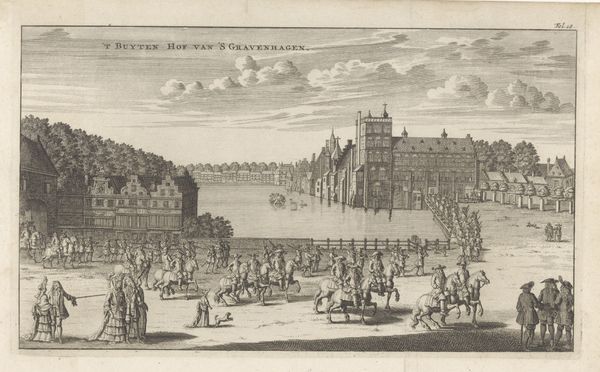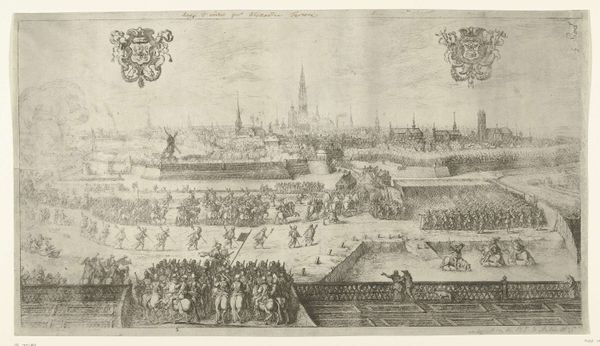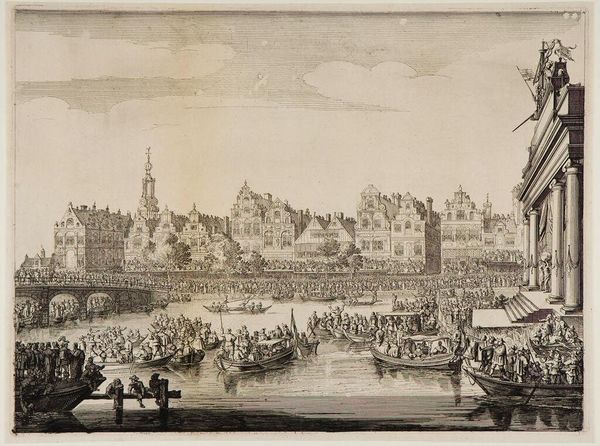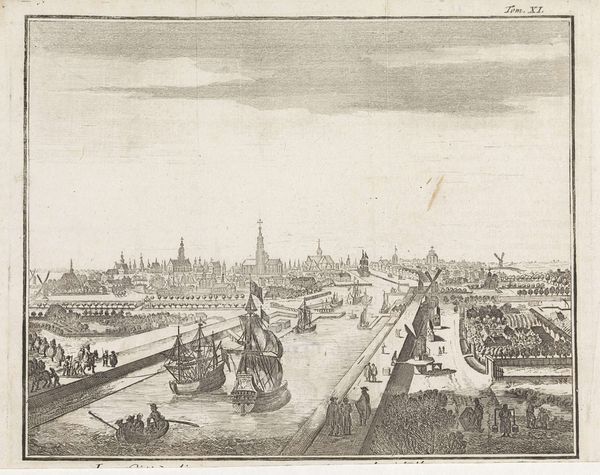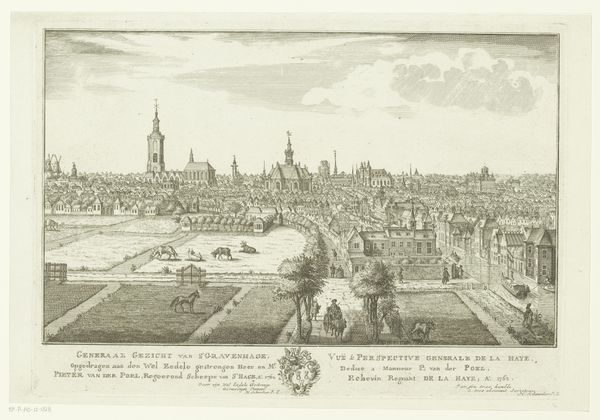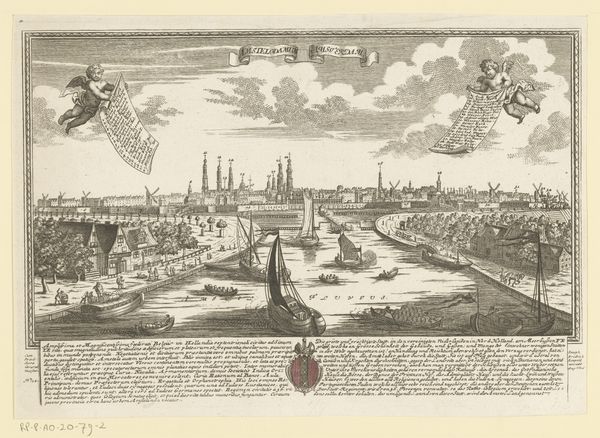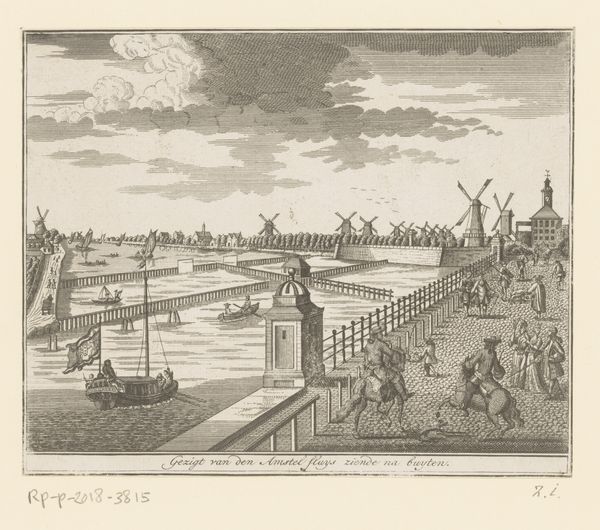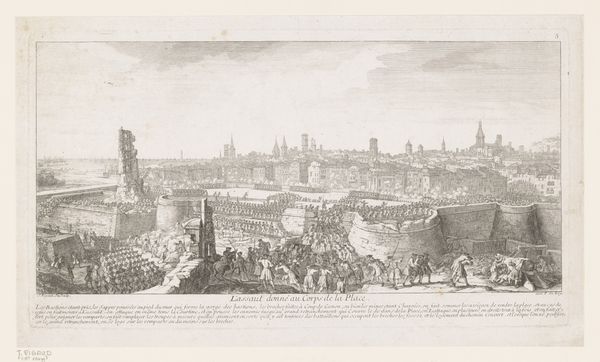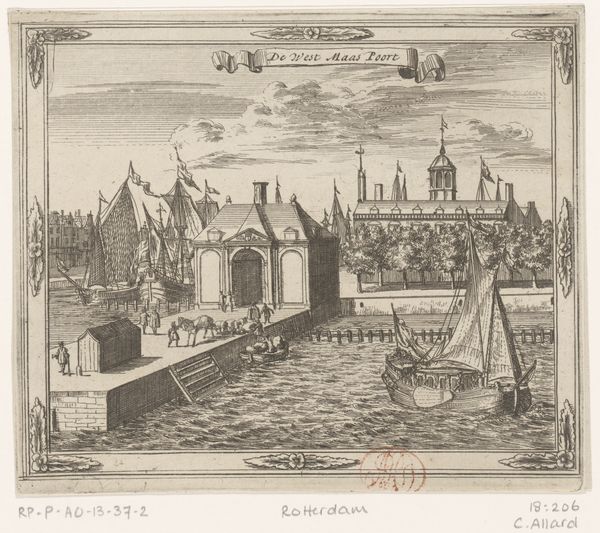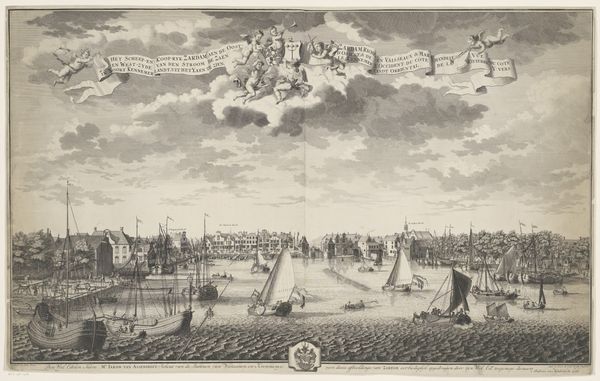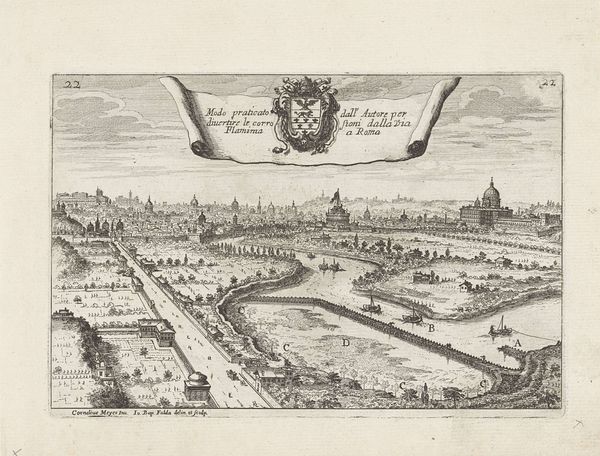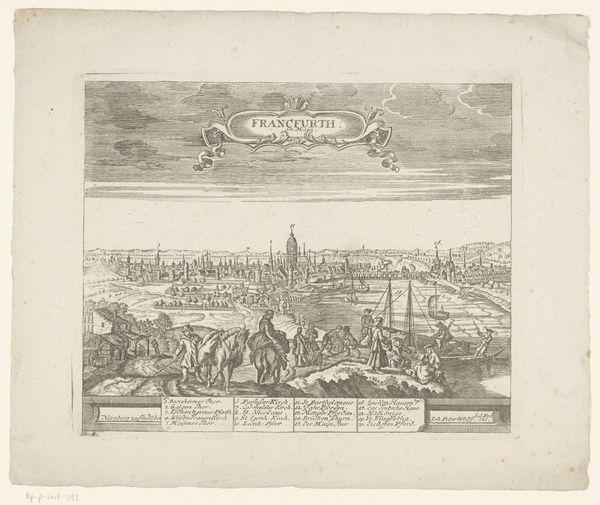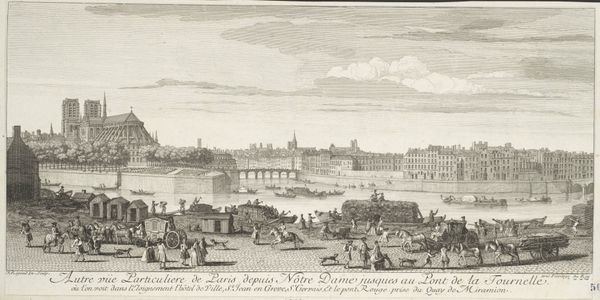
print, engraving
#
baroque
#
dutch-golden-age
# print
#
old engraving style
#
landscape
#
cityscape
#
engraving
Dimensions: height 286 mm, width 512 mm
Copyright: Rijks Museum: Open Domain
Curator: Here we have an engraving titled "Gezicht op Den Haag, 1553," dating from around 1730-1736. Although attributed to an anonymous artist, it depicts a panoramic cityscape. Editor: It has an air of austere formality. Everything is so precisely rendered, with rigid lines, like a map. It gives off this feeling of surveillance and control, observing the comings and goings. Curator: Yes, the precision lends a sense of order and perhaps even civic pride, in what we recognize through time as enduring iconic characteristics of "Den Haag", while still offering subtle historical clues as to social or ideological shifts. Notice the processions. How might the cultural memory shift or inform different periods over time, according to what the eye sees. Editor: These figures definitely play a central symbolic role here. Visually they command the viewer's immediate attention at the bottom of the frame. It’s interesting how they seem separated from the backdrop; almost as if occupying an alternative ideological and perhaps socioeconomic plane. Are we to assume the subjects in this military or authoritative line held a level of governance in this Hague of the time? Curator: Indeed! Consider that in iconography, processions can represent power, order, or even religious devotion. The arrangement of the figures marching creates a sense of linear time and suggests purpose. Editor: It almost feels like we are witness to their dominance of space and ownership of the means and ways through which that society governed, an act. We must ask ourselves: Are we observing historical memory in action, or has our access to witnessing events as rendered from this removed period altered perceptions and assumptions of that period and those governing practices. What could the artist intend? Curator: And think too about the composition: The city receding into the distance, the water reflecting the light, it invites the viewer to participate, if at a distance, with this carefully calibrated narrative and symbolism that it may subtly offer in both the known and the not yet recognizable of visual language. Editor: Perhaps we need to remind ourselves that the work provides, at the very least, a mediated truth that demands consideration with regards to context and intention, rather than immediate visual recognition or subjective perception of narrative memory as either document or propaganda, and with awareness to that of which remains absent from our current interpretation. Curator: Quite right. Thank you. A worthy consideration to take away with us. Editor: Agreed! Let's remember: context is crucial when viewing these depictions of what may at first glance seem benign cultural markers of history.
Comments
No comments
Be the first to comment and join the conversation on the ultimate creative platform.
